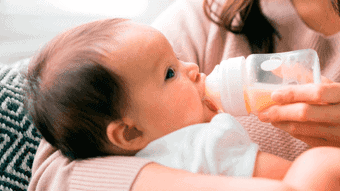Traveling with a baby can be challenging, but it’s even more daunting when you have to bring along a car seat. Thankfully, with proper installation and transportation, you can ensure your baby’s safety while on the go. In this section, we will provide you with expert tips on how to travel with a baby car seat safely.
First and foremost, when traveling with a baby car seat, safety should always be your top priority. Proper installation and securing of the car seat is crucial for your baby’s safety during transportation. Additionally, you should consider investing in a reliable stroller and a travel bag for added convenience.
Whether you’re traveling by car, public transportation, or airplane, it’s essential to follow the correct protocol for transporting your baby car seat. By doing so, you can ensure a stress-free and safe journey for you and your baby.

Key Takeaways
- Proper installation and securing of the baby car seat are essential for your little one’s safety during travel.
- Consider investing in a reliable stroller and a travel bag for added convenience.
- Follow the correct protocol for transporting your baby car seat, whether you’re traveling by car, public transportation, or airplane.
- Always prioritize your baby’s comfort and safety throughout the journey.
- With proper installation and transportation, you can ensure your baby’s safety while on the go.
Choosing the Right Baby Car Seat for Travel
When it comes to traveling with a baby, choosing the right car seat is crucial for their safety and comfort. The type of car seat you need largely depends on your baby’s age and size, as well as the duration and mode of your travel. Here are some options to consider:
| Type of Car Seat | Description |
|---|---|
| Infant Car Seat | Designed for babies up to 30 pounds, generally rear-facing. Can be used as a carrier or snapped into a stroller for convenience. |
| Convertible Car Seat | Can be used for both infants and toddlers, with the ability to change from rear-facing to forward-facing as the child grows. Usually accommodates babies up to 65 pounds. |
| Booster Seat | Intended for children who have outgrown their convertible car seat, but are not yet tall enough to use a car’s seat belt. Usually for children weighing between 30 and 100 pounds. |
Whichever car seat you choose, make sure it meets safety regulations and is appropriate for your child’s age and weight. Additionally, make sure to check the seat dimensions to ensure it fits in your vehicle and any mode of transportation you’ll be using.
Remember, installing and using the car seat correctly is just as important as choosing the right car seat. Keep reading for expert tips on how to safely install and secure your baby’s car seat for travel.
Installing and Securing the Baby Car Seat
Proper installation and securing of the baby car seat is crucial for your little one’s safety during travel. Follow these step-by-step instructions to ensure your baby’s car seat is installed correctly:
- Read the car seat manual and vehicle manual thoroughly before installation.
- Choose the right location for the car seat. Rear-facing car seats should be placed in the back seat of the car, away from the airbag.
- Hold the car seat and secure it tightly with either the LATCH system or seat belt.
- Check the car seat’s angle to ensure it’s not too reclined or upright.
- Buckle your baby into the car seat and adjust the straps accordingly. The straps should be snug and secure but not too tight.
- Make sure the car seat is secure by giving it a firm tug. It should not move more than an inch in any direction.
Adjusting the straps and positioning the car seat is also important for optimal safety. Here are some tips:
- The shoulder straps should be at or below your baby’s shoulders.
- The chest clip should be at armpit level.
- The harness straps should lay flat and not be twisted.
- The car seat should be snug against your baby with no extra space for movement.
Remember, the car seat should always be installed rear-facing for infants and toddlers until they reach the height and weight limits specified by the manufacturer.
Additionally, make sure all passengers in the car are buckled up properly, as this can also affect your baby’s safety.
Traveling with a Baby Car Seat in Different Modes of Transportation
Traveling with a baby car seat requires careful planning, especially when using different modes of transportation. Your baby’s safety is of utmost importance, so it’s crucial to know how to navigate each scenario with your baby car seat.
Airplane Travel
When traveling by plane, most airlines allow you to bring a baby car seat on board for free. It’s recommended to bring a lightweight and compact car seat, such as an infant car seat or a convertible car seat. Make sure to notify the airline in advance and check their policy on baby car seats.
During takeoff and landing, you’ll need to secure the car seat in an upright position using the plane’s seatbelt. It’s also recommended to use a car seat travel bag for protection during baggage handling.
Car Travel
When traveling by car, it’s important to install the baby car seat correctly. Make sure to read the car seat and car manuals beforehand to ensure compatibility and proper installation.
If you’re renting a car, check with the rental company if they provide baby car seats. If not, consider bringing your own car seat or purchasing one upon arrival. Don’t forget to factor in the size of your car and luggage.
Public Transportation and Taxi
Using public transportation such as buses, trains, or subways can be challenging with a baby car seat. Consider using a baby carrier or a lightweight stroller instead.
When taking a taxi, most cities require taxi drivers to have a baby car seat upon request. It’s recommended to call in advance and notify the taxi company that you’ll need a car seat.
Summary
Traveling with a baby car seat in different modes of transportation can be stressful, but proper planning and preparation can make the journey smoother. Consider the type of transportation, the size and weight of the car seat, and its compatibility with the vehicle. Always prioritize your baby’s safety and comfort.

Conclusion
Congratulations! By following these expert tips on how to travel with a baby car seat safely, you’re on your way to a stress-free journey with your little one. Remember, prioritizing your baby’s comfort and security throughout the trip is essential.
Don’t forget to bring a reliable stroller for added convenience, and consider investing in a travel bag to protect your baby car seat during transportation. Whether you’re taking a road trip, flying, or using public transportation, these tips will help you navigate each scenario with ease.
With proper installation and securing of the baby car seat, you can rest assured that your little one will arrive at your destination comfortably and safely. We hope you have a fantastic journey!




